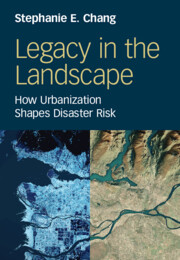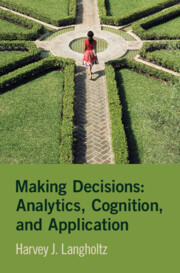Refine search
Actions for selected content:
776 results
Introduction: “An Imaginary Knowledge of the Perfect Truth” Meets the Risk-Uncertainty Conundrum
-
- Book:
- Entanglements in World Politics
- Published online:
- 27 November 2025
- Print publication:
- 11 December 2025, pp 1-30
-
- Chapter
-
- You have access
- Open access
- HTML
- Export citation
Chapter 4 - Risk and Uncertainty in Finance
-
- Book:
- Entanglements in World Politics
- Published online:
- 27 November 2025
- Print publication:
- 11 December 2025, pp 133-174
-
- Chapter
-
- You have access
- Open access
- HTML
- Export citation
Prevalence and risk of having Strongyloides stercoralis infection in alcoholic patients: a systematic review and meta-analysis
-
- Journal:
- Journal of Helminthology / Volume 99 / 2025
- Published online by Cambridge University Press:
- 05 December 2025, e128
-
- Article
- Export citation
Introduction
-
- Book:
- Debts Unpaid
- Published online:
- 04 November 2025
- Print publication:
- 20 November 2025, pp 1-19
-
- Chapter
- Export citation
2 - Broken Contracts
-
- Book:
- Debts Unpaid
- Published online:
- 04 November 2025
- Print publication:
- 20 November 2025, pp 53-98
-
- Chapter
- Export citation

Legacy in the Landscape
- How Urbanization Shapes Disaster Risk
-
- Published online:
- 11 November 2025
- Print publication:
- 11 September 2025
1 - Introduction to Decision Theory and Decision Making
- from Part I - Analytics: Probability, Evaluation, Decision Trees, and Strategies for Decision Making
-
- Book:
- Making Decisions: Analytics, Cognition, and Application
- Published online:
- 23 October 2025
- Print publication:
- 06 November 2025, pp 3-11
-
- Chapter
- Export citation
Chapter 3 - A Theory of Heroic Moral Achievement
-
- Book:
- Moral Heroism without Virtue
- Published online:
- 23 October 2025
- Print publication:
- 06 November 2025, pp 61-85
-
- Chapter
- Export citation
1 - Introduction
-
- Book:
- Before the Fed
- Published online:
- 16 October 2025
- Print publication:
- 30 October 2025, pp 1-12
-
- Chapter
- Export citation
Chapter 23 - Forensic Mental Health Services for Young People
-
-
- Book:
- Seminars in Child and Adolescent Psychiatry
- Published online:
- 10 October 2025
- Print publication:
- 30 October 2025, pp 353-362
-
- Chapter
- Export citation
1 - The Big Picture of Analytics Science
-
- Book:
- Insight-Driven Problem Solving
- Published online:
- 21 October 2025
- Print publication:
- 30 October 2025, pp 12-52
-
- Chapter
- Export citation

Making Decisions: Analytics, Cognition, and Application
-
- Published online:
- 23 October 2025
- Print publication:
- 06 November 2025
3 - The Problem of Merchants’ Self-Perception
- from Part I - The Selbstzeugnisse in Context
-
- Book:
- Making Merchants
- Published online:
- 19 September 2025
- Print publication:
- 09 October 2025, pp 24-30
-
- Chapter
- Export citation
5 - Mercantile Honor/Dishonor
- from Part II - The Merchants’ Selbstzeugnisse
-
- Book:
- Making Merchants
- Published online:
- 19 September 2025
- Print publication:
- 09 October 2025, pp 46-69
-
- Chapter
- Export citation
1 - Risk, Uncertainty, and the Demand for Political Innovation
-
- Book:
- Insuring States in an Uncertain World
- Published online:
- 13 August 2025
- Print publication:
- 18 September 2025, pp 7-19
-
- Chapter
- Export citation
1 - Reconsidering Disaster Risk
-
- Book:
- Legacy in the Landscape
- Published online:
- 11 November 2025
- Print publication:
- 11 September 2025, pp 1-12
-
- Chapter
- Export citation
Quantifying human-centric uncertainty in aircraft maintenance
-
- Journal:
- The Aeronautical Journal , First View
- Published online by Cambridge University Press:
- 29 August 2025, pp. 1-44
-
- Article
- Export citation
The cost of conformity: How deviating from norms increases performance potential
-
- Journal:
- Journal of Management & Organization , First View
- Published online by Cambridge University Press:
- 26 August 2025, pp. 1-16
-
- Article
-
- You have access
- Open access
- HTML
- Export citation
6 - LLMs Meet the AI Act
- from Part II - Evolving Regulatory and Governance Frameworks
-
-
- Book:
- The Cambridge Handbook of Generative AI and the Law
- Published online:
- 08 August 2025
- Print publication:
- 07 August 2025, pp 85-98
-
- Chapter
- Export citation
6 - Pathways to Prison
- from Part II - People on Death Row
-
-
- Book:
- Capital Drug Laws in Asia
- Published online:
- 07 August 2025
- Print publication:
- 24 July 2025, pp 135-164
-
- Chapter
- Export citation
